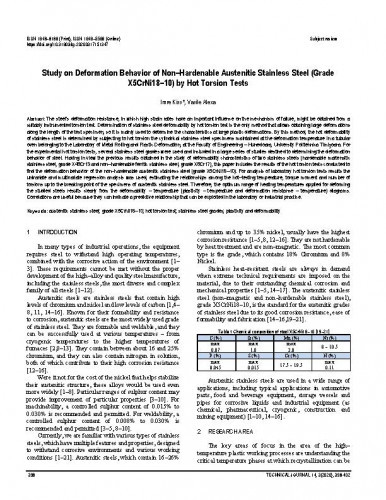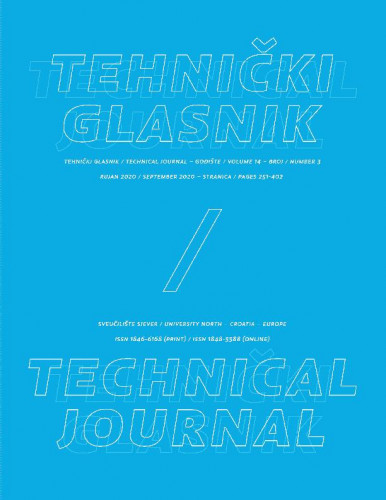The steel's deformation resistance, in which high strain rates have an important influence on the mechanism of failure, might be obtained from a suitably instrumented torsion test. Determination of stainless steel deformability by hot torsion test is the only method that allows obtaining large deformations along the length of the test specimen, so it is mainly used to determine the characteristics at large plastic deformations. By this method, the hot deformability of stainless steel is determined by subjecting to hot torsion the cylindrical stainless steel specimens maintained at the deformation temperature in a tubular oven belonging to the Laboratory of Metal Rolling and Plastic Deformation, at the Faculty of Engineering – Hunedoara, University Politehnica Timişoara. For the experimental hot torsion tests, several stainless steel grades were used and included in a large series of studies destined to determining the deformation behavior of steel. Having in view the previous results obtained in the study of deformability characteristics of two stainless steels (hardenable martensitic stainless steel, grade X46Cr13 and non–hardenable ferritic stainless steel, grade X6Cr17), this paper includes the results of the hot torsion tests conducted to find the deformation behavior of the non–hardenable austenitic stainless steel (grade X5CrNi18–10). For analysis of laboratory hot torsion tests results the univariate and multivariate regression analysis was used, estimating the relationships among the hot–testing temperature, torque moment and number of torsions up to the breaking point of the specimens of austenitic stainless steel. Therefore, the optimum range of heating temperatures applied for deforming the studied steels results clearly from the deformability – temperature (plasticity – temperature and deformation resistance – temperature) diagrams.
Sažetak

 Tehnički glasnik : 14,3(2020) / glavni urednik, editor-in-chief Milan Kljajin.
Tehnički glasnik : 14,3(2020) / glavni urednik, editor-in-chief Milan Kljajin.